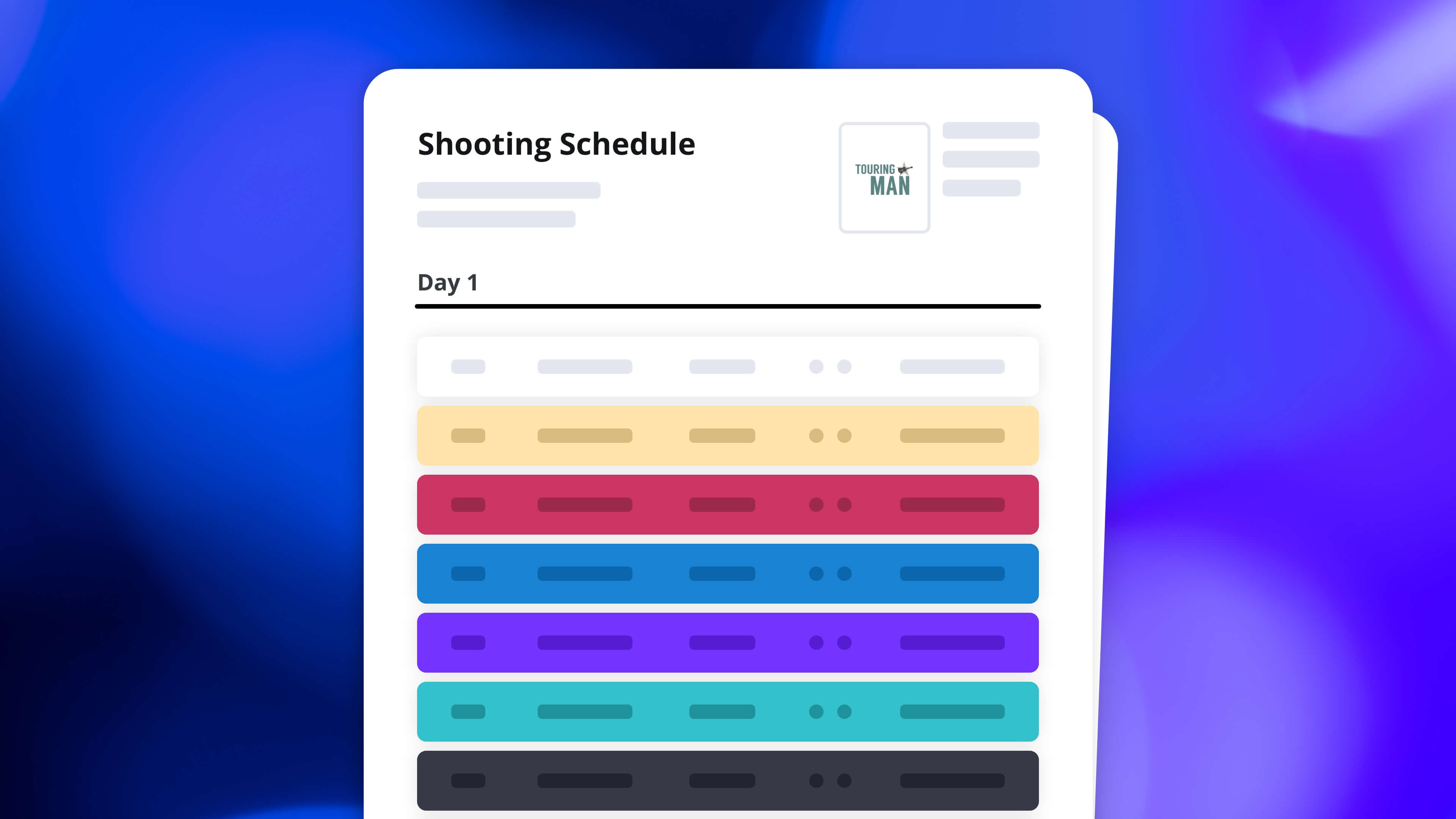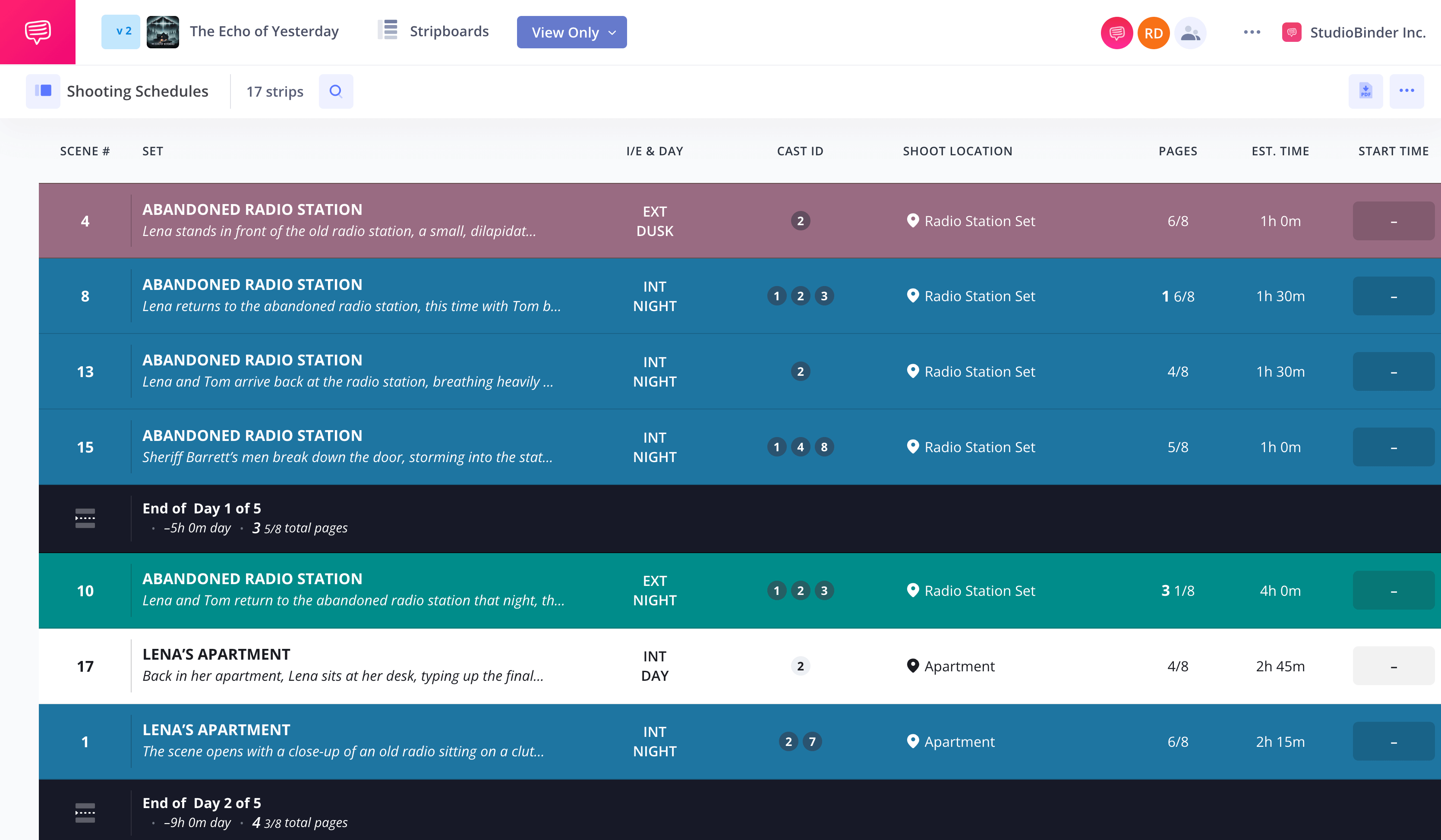You might be pretty familiar with the filmmaking process, but there’s a chance you still might be asking yourself, “What is a shooting schedule?” That’s okay. Unless you’re on the production side of things, you may have never encountered this term. Today, we are going to answer that question and go through some shooting schedule example breakdowns and helpful tips for when you have to make your own. Let’s check it out!
How to Make a Shooting Schedule
Shooting Schedule Definition
What is a shooting schedule used for?
Every creative project needs a plan. With all of the logistics and moving parts in every production, no matter the budget, a plan of attack is crucial. One of the most important organizational tools that helps ensure you make it to the finish line is the shooting schedule template. If a finalized project is buried treasure, this is the map to get you there.
Shooting Schedule DEFINITION
What is a shooting schedule?
A film shooting schedule is a plan that every film shoot, TV show, and commercial follows to make sure the cast and crew stay organized and the production goes smoothly. It's a simple breakdown of the scenes, talent, time, cast, company moves, and day breaks for every day of the production.
What is a Shooting Schedule Used For?:
- Film (Features, Shorts, Documentaries)
- Television
- Commercials
Most productions use a stripboard schedule, where each scene is assigned a separate "strip" that can be moved and scheduled as needed for the film shoot. Here’s how a shooting schedule example can help illustrate this process. Learn more about making a shooting schedule.
Here's a shooting schedule example we made using StudioBinder's shooting schedule software. Click the image below to explore the schedule.
Shooting Schedule Example made in StudioBinder
The Director and cinematographer certainly have input into creating a shooting schedule. However, it is the 1st Assistant Director's responsibility to assemble the film production schedule to ensure a seamless film shoot.
Each person brings their previous experience to the table, and they help define what a shooting schedule is for this project, often working alongside a shot list to ensure efficiency. Reviewing an example shooting schedule can provide valuable insights into structuring yours effectively.
As you saw in the video above, writer/director Arnon Shorr walked us through the "how" and the "why" related to scheduling with a stripboard.
Below is an up-to-date tutorial series on the latest version of StudioBinder.
Related Posts
Building a Professional Shooting Schedule
Making a film shooting schedule
Thanks to today's technology, making a film shooting schedule is a cinch. In the following guide, we'll walk through every single step of how to make a filming schedule in StudioBinder, including an example shooting schedule to illustrate best practices.
1. Import or sync your script
The first step when creating a schedule is to import your script. StudioBinder is compatible with all major screenwriting program files. Of course, if you've written your script with StudioBinder's screenwriting software, all you need to do is "sync" it to the project.
How to Create a Shooting Schedule
2. Reorder your stripboard
With your script imported and synced, all your scenes will generate their strip on the stripboard. Now, it's up to you to reorder those strips to create the most efficient schedule.
Organize and strategize your schedule
3. Customize your layout
With your stripboard in the right order, you can now choose the best layout of the information. This means you can enable (show) or disable (hide) various columns on your schedule for a more or less detailed view.
Customize your filming schedule layout
4. How to make schedule variations
Any 1st AD putting these schedules together will tell you that having a Plan B (or C, D, and E) is a must. In this step, learn how to create variations on your schedule for these alternate scenarios.
Make variations for all possibilities
5. Generate a call sheet from your schedule
When the time comes to generate a call sheet for a day's film shoot, you can do so directly from the stripboard. In this video, find out how easy it is.
Run a call sheet straight from the schedule
Related Posts
6. Make a stripboard PDF
You can always send a "share only" link or invite collaborators to your project but sometimes a PDF is what's needed. Here's a breakdown of how to make a PDF of your schedule.
Create and share a PDF version
7. How to sync new script revisions
Script changes are inevitable but that doesn't mean you need to start over with your schedule. Watch how to quickly import the new script and make any changes to your stripboard.
How to import and sync script changes
8. How to view and download schedule reports
With the film shooting schedule, you can run a variety of reports to track shoot days and ensure efficiency on the film shoot. The schedule itself, of course, but you can choose many options for other reports (like DOOD reports) based on shooting day, location, characters, etc.
Viewing and downloading schedule reports
UP NEXT
Build your own shooting schedule now
Now that you know what a shooting schedule is and how to make one, it's time to get started with an example shooting schedule to guide your process. With this post as a guide, create a schedule for your next project and see how valuable they truly are.


